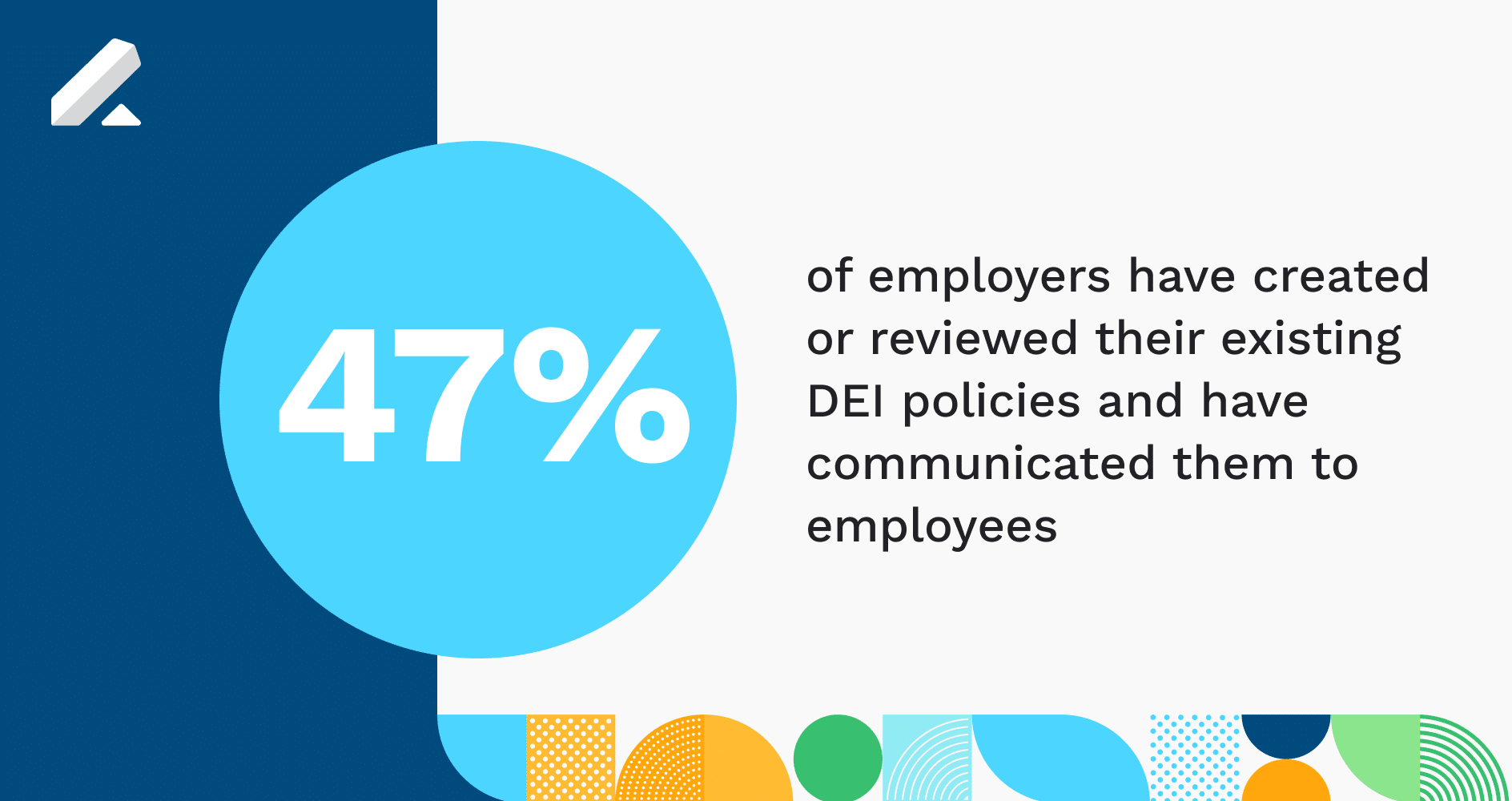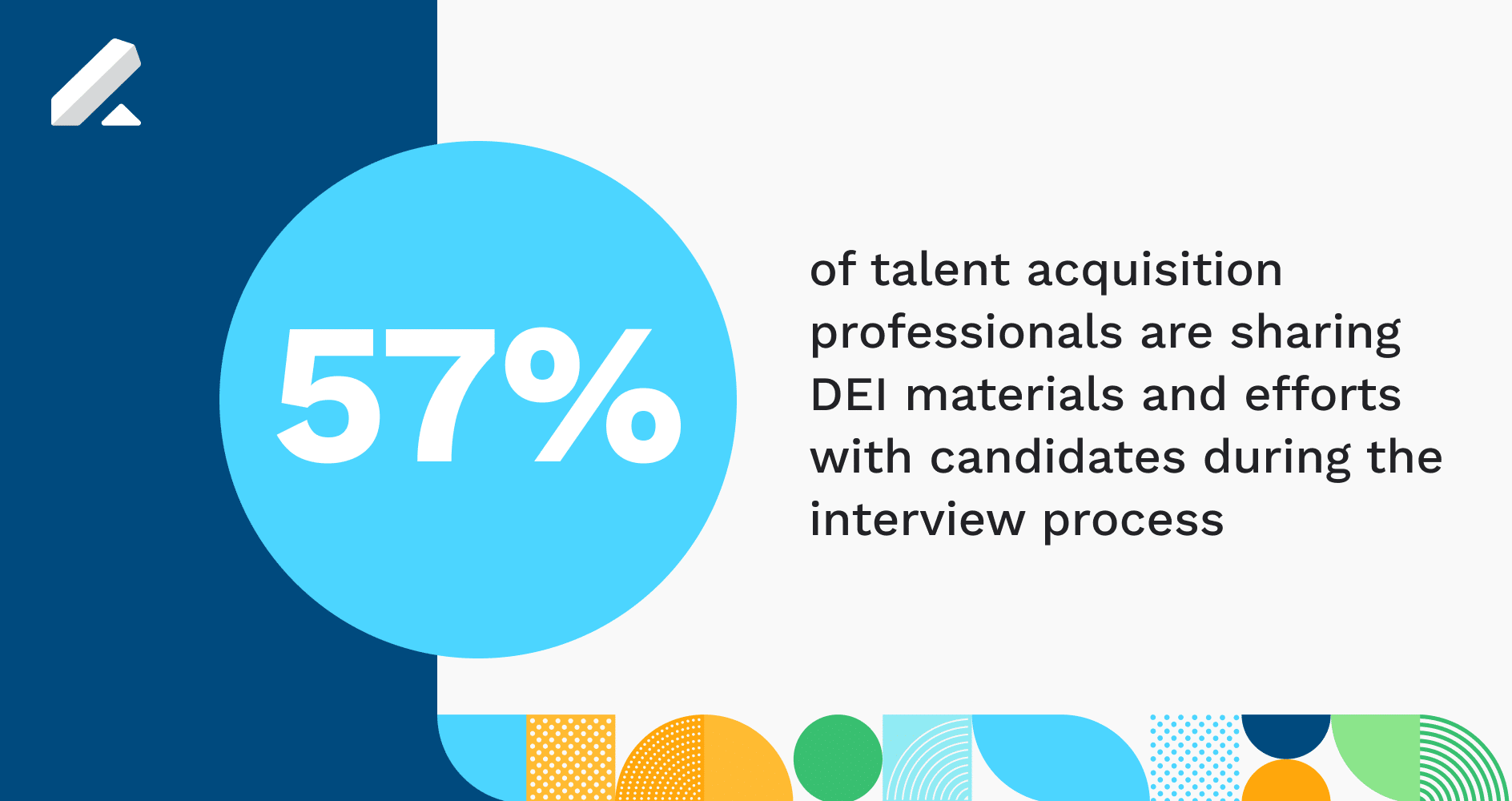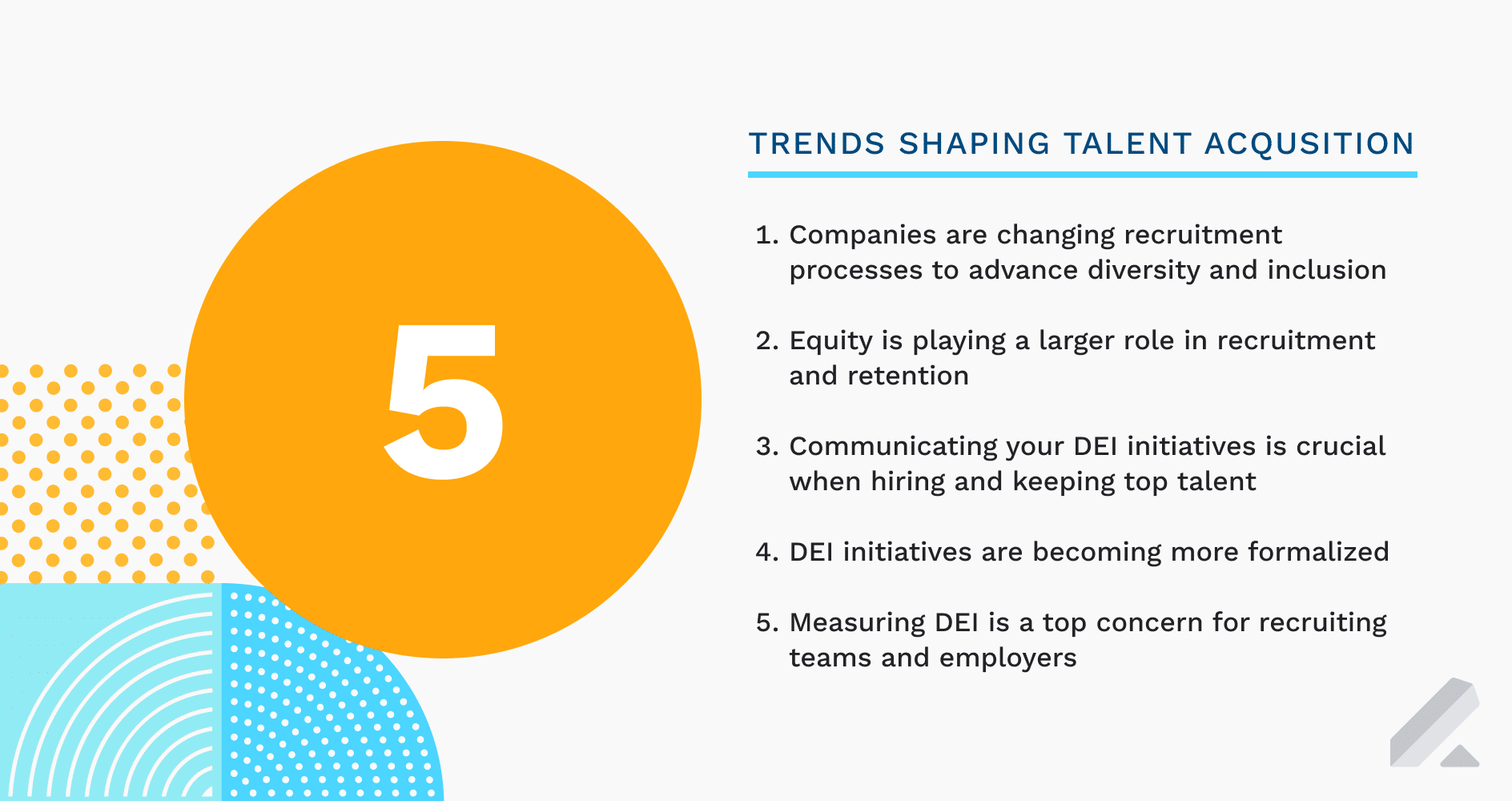Where diversity, equity, and inclusion (DEI) were once just buzzwords for businesses, today, DEI is considered a cornerstone of successful organizations. Not only has it proven to be a driving force in helping companies increase revenue, capture wider market share, and spur innovation—it’s also empowered employers to create multifaceted workplaces where a myriad of perspectives and experiences are welcomed and encouraged.
While DEI initiatives have become imperative to organizations across the board, there is still a fair amount of work to be done in driving diversity, equity, and inclusion in and outside of our workplace cultures. Progress is steadily being made by employers who recognize the intrinsic value of DEI (and the very real ROI of fostering diverse organizations).
In our latest Report, The State of Diversity, Equity, and Inclusion Efforts: Progress, Priorities, and Opportunities, we surveyed over 500 HR decision-makers and 1,000 employees to determine DEI progress, how talent acquisition professionals are pushing the needle forward for DEI, and the work that still needs to be done to drive continuous improvement. Our research found that while many organizations are actively recruiting, just 31% are making DEI a top priority. Below, we dive into 5 emerging trends in DEI revealed through our research.
Companies are changing recruitment processes to advance diversity and inclusion
In 2020, our State of Recruiting Report found that 50% of employers were making DEI a top priority. But is that commitment coming to fruition as we move through 2021 and beyond?
DEI is not a project or problem to solve—it’s an ongoing, ever-evolving effort that involves every individual at an organization and touches nearly every aspect of work. To see long-term change we need to keep moving forward, measuring results, learning from past results, and course-correcting as needed.
Our research found that 79% of employers are actively recruiting, while 20% plan to hire new team members. Those that are actively hiring are striving to achieve more diversity in their recruiting process.
- 45% of talent acquisition professionals are using an online platform to evaluate applications at scale
- 43% are ensuring their job postings eliminate unconscious bias
- 37% are recruiting via non-traditional outlets
- 34% are standardizing interview questions and rubrics
- 36% are replacing educational requirements with core competencies and skills
At the same time, just 29% of organizations are offering DEI and bias training to their recruiting teams, and only 28% involve diverse stakeholders in hiring decisions, signaling that there are significant opportunities for improvement in the recruiting remaining.
Equity is playing a larger role in recruitment and retention
Long-term success with DEI requires more than just hiring the right people—you have to retain them, too. The talent you hire must be treated fairly and given equal opportunity to succeed in your organization. When you prioritize equity as much as diversity and inclusion, you’re investing in your human capital (your business’s most valuable asset).
So, what are employers doing to ensure all their people have equal access and opportunity? Our research revealed:
- 60% of employers say they have provided accommodations, opportunities, and tools for employees to succeed based on their specific needs
- More than half (51%) say they introduced flexible policies
- 52% also worked to make sure employee pay was equal across titles or positions
Though employers have taken steps toward establishing equity, there’s still room for improvement. Namely, in the areas of expanding benefits and perks, which only 27% of employers say they have introduced, using gender-inclusive language in their employee handbooks (31%), and offering gender-neutral paid family leave (32%).
Our research shows that employees also feel equity is progressing in areas that their employers are actively improving.
- 27% of employees say their employers are providing accommodations and tools to help them succeed based on their unique needs
- 20% claim their employers are introducing gender-neutral paid family leave policies
- 23% say their employers ensure employee compensation is equal across positions or titles

Communicating your DEI initiatives is crucial when hiring and keeping top talent
As we mentioned above, DEI is an ongoing process; it’s not a one-and-done initiative, and it takes buy-in from everyone in your organization to drive progress forward. However, it’s not only existing employees that need to be aware of your ongoing DEI efforts—prospective employees should be made aware, too.
Recognizing where your organization currently stands with DEI, and both your ongoing and future initiatives is crucial when recruiting top talent. Our research shows that 24% of candidates are looking for more diverse, equitable, and inclusive workplace cultures, and yet, only 23% of employees we surveyed say their employers shared DEI efforts with them during their hiring process.
What’s more, only 27% of employees claim DEI efforts were highlighted throughout their interview process, and just 24% were introduced to ongoing DEI initiatives during onboarding.
Communication and transparency with your DEI initiatives are imperative if your organization hopes to attract and retain diverse talent—and more talent acquisition teams are recognizing this.
- 44% of talent acquisition professionals are updating employee handbooks to reflect DEI efforts
- 50% are sharing DEI initiatives across company channels
- 57% are sharing DEI materials and efforts with candidates during the interview process
- 62% are leveraging social channels to communicate DEI initiatives
When it comes to communicating DEI goals and progress to existing employees, 58% of talent acquisition teams feel this is their largest room for improvement across their organization—and employees appear to agree. Overall, 17% of employees believe one of the greatest challenges faced by their employers is communicating DEI efforts, while 24% feel their employers place a higher priority on other organizational goals.
DEI initiatives are becoming more formalized
Slowly but surely, organizations are making steady progress with their DEI initiatives. But one trend that emerged through our research is the formalization of those initiatives—and the strategies behind them.
- More than half (51%) have formalized a DEI strategy for their organization
- 47% have created or reviewed their existing DEI policies and have communicated them to employees
- 44% have made actionable changes to hiring policies
- 34% are offering resources for Employee Resource Groups (ERGs)
- 40% are offering resources, tools, and education or support around DEI for employees
- 32% are developing more standardized change management tactics
Despite the progress being made, there’s still quite a bit of room for improvement in formalizing DEI strategies and goals, especially from the employee perspective. A quarter of employees say their company hasn’t implemented any equity measures, and 24% say the same about inclusion initiatives. Though messaging around diversity has been more effective, 16% of employees say their employer hasn’t communicated to them about it.
Additionally, our research shows that over the last 12 months, employees believe:
- 27% of their employers have created or reviewed our DEI policies and provided them to employees
- 24% of their employers have formalized a DEI strategy for their company
- 25% of their employers provided resources on how employees can get involved with DEI
- 21% of their employers have made true changes to their hiring processes
We also found that 24% of employees believe their employers haven’t introduced any formalized DEI measures over the past 12 months. Bearing this in mind, it’s clear that employers have work to do in formalizing their DEI goals and initiatives.

Measuring DEI is a top concern for recruiting teams and employers
Without measuring the progress of your DEI initiatives, there’s no way to qualify your efforts or determine which initiatives are making a true impact across your organization. But it can be tricky to measure these efforts because DEI permeates every aspect of your business, and some areas could yield more opportunities for improvement than others.
For example, while recruiting efforts may yield a diverse pool of candidates, diversity could be lacking when it comes down to actual hires. Or, despite a diverse workforce, employees may not feel included or heard. That’s why it’s vital to measure DEI in several different ways.
When measuring DEI, our research has found that more HR and talent acquisition teams are proactively leveraging metrics that help them determine their DEI efforts.
- 57% are using hiring results
- 48% are using employee demographics
- 55% are leveraging employee experience surveys
- 37% have regular check-ins with employees to gather insights
- 39% hold employee focus groups
However, there are metrics that employers should consider more heavily, namely insight from offboarding interviews (15%), compensation increase and promotion rates (35%), and retention rates (37%).
Measuring your DEI efforts has become even more imperative as organizations adjust to the new reality of talent acquisition and work. Harnessing analytics and insights from your recruiting, hiring, and onboarding (along with employee data) can provide a holistic understanding of your organization’s DEI efforts and impacts.
Make your recruiting process a foundation for change
DEI isn’t a problem that can be solved overnight — it requires consistent commitment from everyone within an organization to drive change. As a result, about a third of employers (29%) say while they’ve initiated changes, there’s a long way to go. Nevertheless, most organizations are optimistic about their ability to achieve measurable DEI success — 93% are somewhat or highly confident they’ll reach their goals.
At Lever, we’re committed to providing you with the tools you need to attract, nurture, and retain diverse talent in your organization. We surveyed over 500 HR decision-makers and 1,000 employees to determine the state of DEI in 2021—and we break down the results in our latest Report.
Download the Report

